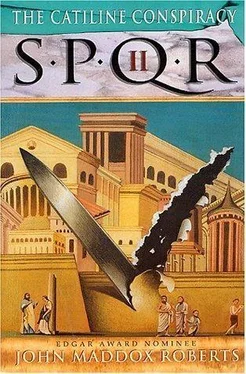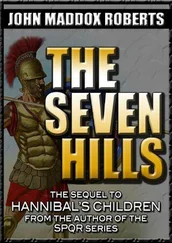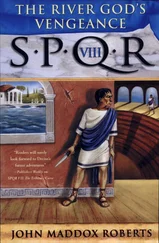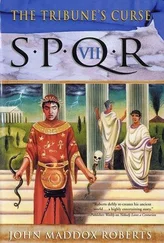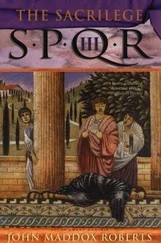John Roberts - The Catiline Conspiracy
Здесь есть возможность читать онлайн «John Roberts - The Catiline Conspiracy» весь текст электронной книги совершенно бесплатно (целиком полную версию без сокращений). В некоторых случаях можно слушать аудио, скачать через торрент в формате fb2 и присутствует краткое содержание. Жанр: Исторический детектив, на английском языке. Описание произведения, (предисловие) а так же отзывы посетителей доступны на портале библиотеки ЛибКат.
- Название:The Catiline Conspiracy
- Автор:
- Жанр:
- Год:неизвестен
- ISBN:нет данных
- Рейтинг книги:3 / 5. Голосов: 1
-
Избранное:Добавить в избранное
- Отзывы:
-
Ваша оценка:
- 60
- 1
- 2
- 3
- 4
- 5
The Catiline Conspiracy: краткое содержание, описание и аннотация
Предлагаем к чтению аннотацию, описание, краткое содержание или предисловие (зависит от того, что написал сам автор книги «The Catiline Conspiracy»). Если вы не нашли необходимую информацию о книге — напишите в комментариях, мы постараемся отыскать её.
The Catiline Conspiracy — читать онлайн бесплатно полную книгу (весь текст) целиком
Ниже представлен текст книги, разбитый по страницам. Система сохранения места последней прочитанной страницы, позволяет с удобством читать онлайн бесплатно книгу «The Catiline Conspiracy», без необходимости каждый раз заново искать на чём Вы остановились. Поставьте закладку, и сможете в любой момент перейти на страницу, на которой закончили чтение.
Интервал:
Закладка:
"Venus!" Aurelia breathed, making it sound almost like a prayer. Indeed, it was venus, the highest score. Each of the knucklebones showed a different surface.
"It will take some luck to match that," Catilina said, taking the cup. "But I have always been a lucky gambler." He shook the cup and slammed it down. He jerked the cup back and cursed, loudly and sincerely. I did not think it was because of the money he had lost. The knucklebones each showed the same surface, and it was the surface given the value of one. It was the lowest score, canicula, the little dog.
Chapter V
Over the next week, there were four more murders. All the victims were equites. Even for Rome, this was something unusual and the city was abuzz. One was bludgeoned, one had his throat cut, one was stabbed and the fourth was found floating in the Tiber, drowned. This last may have been accidental, but after five clear murders, nobody was ready to believe that.
The usual wild ideas made the rounds. Soothsayers offered murky revelations. But the city was not really alarmed. In fact, the general attitude was one of quiet satisfaction. The equites were not popular. They lacked the prestige of the nobiles and the senatorial class and they did not have the numbers of the commons. Too many people were in debt to them. They had wealth and comfort and thus were envied. There was still much hard feeling over the Praetor Otho's infamous action in reserving for the equites the fourteen rows of theater seats behind those traditionally reserved for the Senators and the Vestals. Overall, the general feeling in the city was that a few murders were just what that upstart class needed.
One of the murdered men, named Decimus Flavius, was a director of the Red faction in the circus. I decided to investigate him first, for no better reason than that the Caecilii were traditionally members of the Red faction, although the rest of the Metelli were Whites. Both of these factions were dwindling as the Blues and Greens came to dominate the races. The Greens had become the faction of the common man, while the Blues were the faction of the aristocratic optimates, their clients and supporters. Most of the equites were also Blues. These two factions would occupy facing sections of the circus and engage in great shouting matches before the races. Riots were still rare at that time, though.
The logical place to find out about Flavius was the Circus Maximus, and so on the morning after the murder was reported I made my way down from the Forum to the ancient Valley of Murcia between the Aventine and Palatine hills. Here was where Tarquin the Old had laid out Rome's racecourse when the city was still little more than a cluster of villages atop the seven hills. The place was so ancient that nobody could remember why its Temple of Consus was underground.
The Circus Maximus was the largest structure in Rome, a huge building complex housing everything necessary for getting four chariots, each with four horses and a charioteer, onto the sand in time for the race. This is not as simple as one might think. Horses were brought from as far away as Spain, Africa and Antioch. They were trained for a minimum of three years. The charioteers began their training in childhood and losses were high, so there had to be a steady supply of them. Chariots were made as light as possible to make them faster, so they had to be replaced constantly. Charioteers and horses needed a special diet. There were slaves to care for the chariots and harness, slaves to care for the charioteers, and immense numbers of slaves to care for the horses, cleaning out their stalls, seeing to their exercise, grooming them and doctoring them. There were even slaves who did nothing but talk to the horses to keep them contented and run alongside them on the way to the races, cheering them and raising their spirits.
Wherever Rome went, the circus went, and the factions maintained headquarters wherever there was a circus. It was not unusual for a single faction to maintain a stud of eight or ten thousand stallions to keep a single, small province supplied. In short, the circus was the largest institution in our empire. And the Circus Maximus was the largest such building in the world. Its lowest courses of seats were of stone, but the rest of the building was wooden. When filled to capacity with more than 200,000 spectators, the timber superstructure emitted the most alarming squeaks and groans, although it had never collapsed. There was always talk of building a permanent structure of stone, but no steps had been made in that direction. I think the populace just liked the rickety old place, even if it was the most significant fire hazard in the city. The arches beneath the stands constituted a minor forum, with shops and stalls selling everything from sausages to the services of inexpensive prostitutes. It was said in Rome that, should anything be stolen from you, all that you had to do was loiter around the Circus Maximus for a while and someone would offer to sell it to you. The citizenry had never conceived quite as much affection for the Circus Flaminius, which lay outside the old city walls. It was not as large and was only a little more than 150 years old.
When I arrived at the circus, it was bustling with activity. There would be races in just a few days, and those who were to participate in the preliminary procession were rehearsing. The slaves who bore the images of the gods practiced hoisting the platforms to their shoulders and marching in step to the music of horn, lyre and flute. Small, gilded chariots drawn by tiny ponies bore images such as thunderbolts, owls, peacocks and so forth, the attributes of the gods. These charming vehicles were driven by children who, for some reason, had to have both parents living. These white-robed little boys put their ponies through their paces with great seriousness. The musicians set up a great din and wild-haired women with tambourines danced like maenads in honor of Bacchus. A group of men in plumed helmets and scarlet tunics, bearing spear and shield, went through a slow, solemn war dance while behind them a pack of men dressed as satyrs, with goat tails attached to their rumps and huge, red phalluses to their loins, performed a bawdy parody of the same dance. All that was missing was the crowd in the stands.
On the sand, horses were being exercised, allowing them to grow accustomed to the racecourse and its immense environs. I walked along the whole length of the course, beside the spina, which had not yet acquired the crowd of statues that graces it now. At each end were the spikes tipped with seven gilded eggs marking each of the seven laps of a race, one egg being removed to mark each lap. This was before the water-spitting dolphins were added to aid the spectators in keeping track of how fast they were losing their money.
The sand, specially imported from Africa, was continually raked smooth after each batch of chariots rattled by. I was gladdened to see that the sand was its accustomed tan. When Caesar was aedile, he had spread green-tinted sand in the circuses, the color of his faction. He had achieved this remarkable effect by mixing pulverized copper ore with the sand. Past the spina, and careful not to be trampled by the practicing charioteers, I crossed the track and passed out through the open end of the great stadium where the starting gates stood open.
Beyond these gates was the stable area, almost as large as the circus itself. Since White and Red were the oldest factions, their stables and headquarters were nearest the circus. Red headquarters was a six-story building the size of a tenement built directly above their brick stables. The stables themselves were three-storied; two above ground and one below, connected by ramps broad enough for a pair of four-horse chariots to pass. The timber and plaster building above was painted, naturally enough, red. Outside were statues of famous horses from the stables, and the facade was decorated with plaques bearing the names of hundreds of others, listing the victories of each. The smell of horses was overwhelming, but it was more agreeable than many scents the city had to offer.
Читать дальшеИнтервал:
Закладка:
Похожие книги на «The Catiline Conspiracy»
Представляем Вашему вниманию похожие книги на «The Catiline Conspiracy» списком для выбора. Мы отобрали схожую по названию и смыслу литературу в надежде предоставить читателям больше вариантов отыскать новые, интересные, ещё непрочитанные произведения.
Обсуждение, отзывы о книге «The Catiline Conspiracy» и просто собственные мнения читателей. Оставьте ваши комментарии, напишите, что Вы думаете о произведении, его смысле или главных героях. Укажите что конкретно понравилось, а что нет, и почему Вы так считаете.
